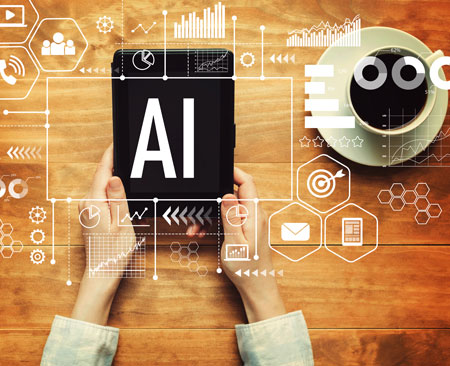AI is coming! AI is coming!
Or is artificial intelligence already here and has been for a while?

Few would argue the term artificial intelligence represents the newest of buzzwords in the foodservice industry today. But is AI really new to foodservice? Or has it been present for a while? I contend it’s the latter, although the application has accelerated in the last year.
When a monitoring device in a walk-in freezer or refrigerator sends a warning to the operator that the temperature in the walk-in is less than the acceptable level, this is AI. When a hand-washing system sends a notification to the employees to wash hands, this is AI. How about an application that lets the operator know a piece of cooking equipment needs maintenance? That’s AI, too. And that last feature is present in today’s automobiles, serving as a nagging reminder to take care of our vehicles. But I digress … These are but a few examples of how AI manifests itself in today’s foodservice industry. I am sure you can think of many others not discussed here. While these applications may not be all that sexy, they do represent real-life applications of AI in foodservice.
The same can be said about application of AI in our daily lives. My favorite is Google Maps. The fact that this application makes adjustments on which route to take based on changes in conditions, it is clearly AI. Some may argue that it has some inaccuracies, but since you can’t compare side-by-side with your own directions, you will never know. Good enough AI, I would say.
Since the last post, I have come across many AI applications in foodservice that are perhaps a bit clearer.
One very prevalent application that has been in the news lately is the voice recognition system that Chipotle is testing. Will this AI-based system replace employees, provide customers better service or drive more sales through consistent suggestive selling? Only time will tell.
McDonald’s and other concepts are also applying AI technology as well.
Domino’s in Australia continues to research an AI application that checks for pizza order accuracy and quality, known as DOM Pizza Checker. The pizza chain is even advertising the application of this technology as a competitive advantage in the marketplace.
One of my favorite recent readings I did was in the application of AI to manage bar lines in busy pubs. Leave it to the Brits to keep organizing how patrons get drunk or “pissed” as they say. For those of us that have been in busy pubs in the U.K., you can clearly appreciate this system, since at times it is daunting to get a pint.
One interesting application of AI in foodservice to manage food waste is a system that includes a combination of cameras, scales and AI meters to provide information on the food coming back to the kitchen that is not consumed and ends up being wasted. This can certainly drive menu changes and how much is served in a plate by the kitchen.
Another of my favorite AI applications is Alexa. I can now find any song that I want to listen to, or show my adult children and grandchildren what good music is all about.
As you can see, AI continues to become more prevalent, with different purposes and applications. Some pundits, like those in this Forbes article, even theorize that AI could replace humans one day.
What stood out to me about this article is the point that while the human brain is a lot more flexible than a computer, a computer is much more powerful in information processing: “the human brain processes tasks at 60 bits per second. The world’s fastest supercomputer runs at 200 petaflopts. Roughly equivalent to the work of 6.3 billion humans in an entire year” in one second.” I don’t know what a petaflopt is, but it sure sounds fast. Scary!
As the application of AI grows, the application of AI to protect oneself from thieves also needs to grow. Leave it to the crooks to have some AI counter-intelligence of their own. Good thing that the next Y2K is not coming for a while and we don’t have to worry about how the change to a new century can impact technology.
Let’s not confuse AI with automation or with robotics. While AI and robotics are definitely related, they are not exactly the same. Both may promise similar outcomes — labor reduction, quality and consistency improvement, order accuracy, sales building and others — but the physical manifestation of the devices tend to differ significantly. You can have AI inside an automated machine, but the reverse may not be so.
One thing for sure is that the pressures that restaurant operators feel require that they continue to reinvent themselves. In this reinvention the application of various forms of technology, including AI, remains imminent. Doing so may become the difference between thriving in this competitive marketplace and going the way of the dinosaurs.



